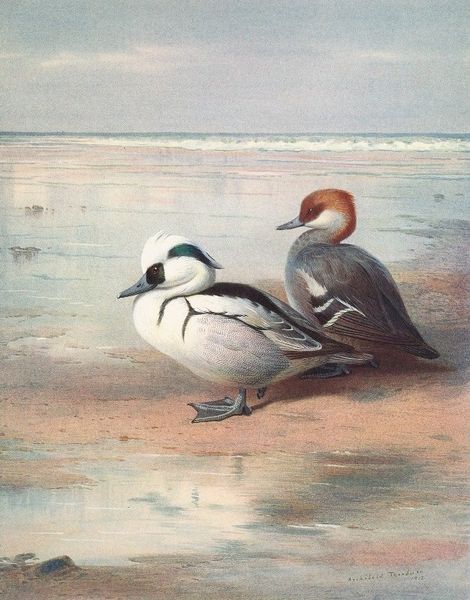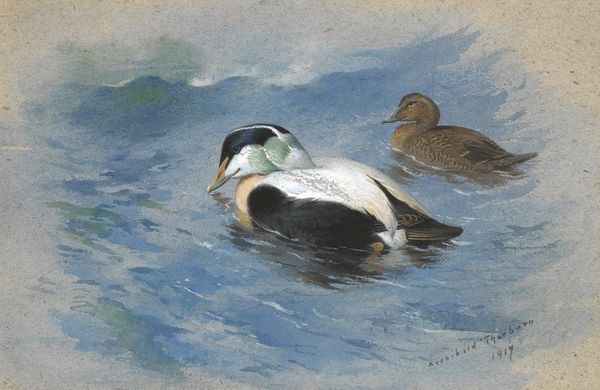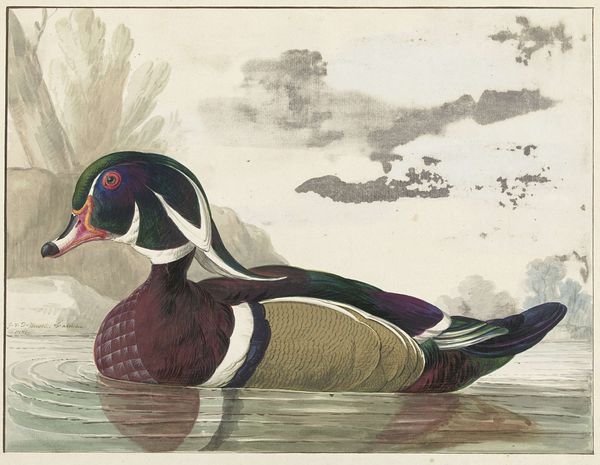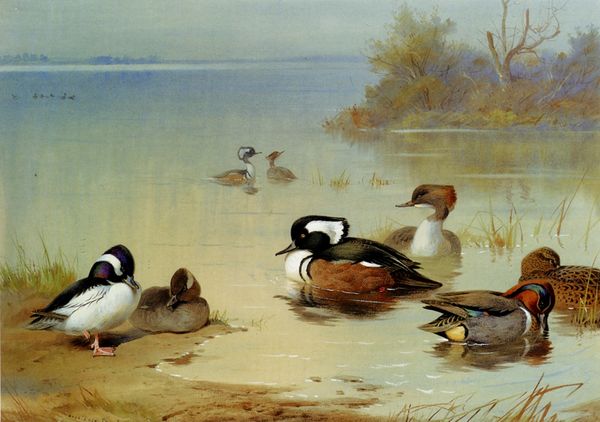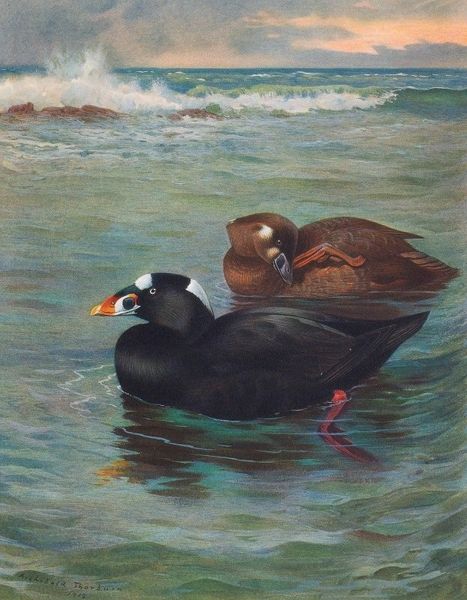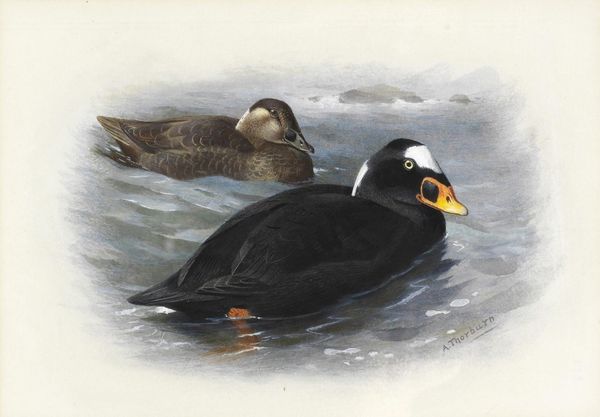
#
animal
#
possibly oil pastel
#
oil painting
#
acrylic on canvas
#
animal portrait
#
naturalistic tone
#
surrealism
#
animal drawing portrait
#
surrealist
#
fine art portrait
#
digital portrait
Copyright: Public Domain: Artvee
Editor: So, we're looking at Archibald Thorburn's "Eider Duck" from 1913. It’s incredibly detailed. I’m immediately struck by how lifelike the birds seem against the coastal backdrop. What can you tell me about what this painting communicates? Curator: This work captures more than just a pretty bird, doesn’t it? Consider the Eider duck itself. In many maritime cultures, ducks symbolize resourcefulness, adaptability, and a deep connection to the water. Think about it, these birds navigate both air and water, linking the conscious and unconscious realms, just as humans navigate different states of being. Editor: That’s interesting. So the location, the sea and land in the background, plays a role? Curator: Absolutely. Thorburn situates them at the edge of land and sea, representing a threshold. Look at the juxtaposition of the male, so strikingly white and black, standing erect, watchful, and the more muted brown female at rest, nestled into the landscape. Does this composition suggest any power dynamics or contrasting energies to you? Editor: Perhaps a division of roles? The male standing guard while the female rests. That makes me think of traditional family structures. Curator: Precisely! Thorburn wasn't just painting a bird; he was imbuing it with cultural significance, tapping into archetypes and societal structures familiar to his audience. He's painting a familiar world in microcosm. Editor: So it’s not just observation, but commentary. That reframes the entire work. I’ll definitely remember to look beyond the surface details next time! Curator: Indeed. Art invites us to delve into those hidden layers, to uncover the memories and meanings woven into its very fabric.
Comments
No comments
Be the first to comment and join the conversation on the ultimate creative platform.
